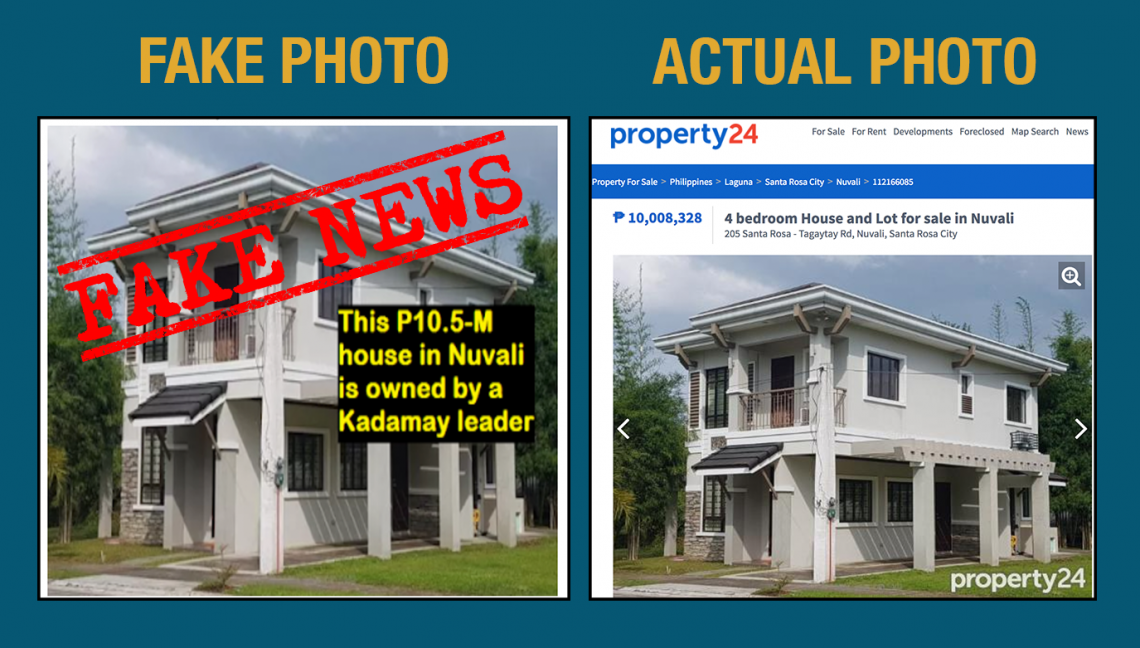Militant group Kalipunan ng Damayang Mahihirap (Kadamay), a group fighting for free housing for the poor, says Metro Manila has the most number of people without homes in the world.
It has been using this claim in its bid for mass housing, with thousands of its members taking over resettlement areas of the National Housing Authority (NHA) in Pandi town in March in a protest movement that is now called “Occupy Bulacan.”
STATEMENT
Two of Kadamay’s recent statements asserting the urban poor’s right to mass housing included a set of “Quick Facts.”
“On Homelessness and #OccupyPabahay:
According to List25.com in 2014, Metro Manila has the world (sic) largest homeless population.”
(Sources: “Kalbaryo ni Lola,” Kadamay Media Center, April 10, 2017; “Kadamay calls for nationwide protests for distribution of idle units to homeless,” Kadamay Media Center, April 8, 2017)
It cited as its source a list put together by List25 that ranked “25 Cities with Extremely High Homeless Populations.”
List25 describes itself as a company founded in 2011 “as a venture to share and promote bizarre, informative, and innovative content,” explained its ranking on Metro Manila this way:
“According to Homeless International, around 22.8 million reside in slums.”
The website of Homeless International is no longer existent, its name having been changed to Real Equity for All or Reall, a UK-based international development organization. It describes itself as a social enterprise with a “network of partners in more than 15 countries in the developing world who are delivering decent housing people can afford.”
The site, however, does not contain information on Metro Manila and the state of its slums.
FACT
Did List25, and consequently Kadamay, get the figures wrong?
The 2015 Population Census shows the whole of Metro Manila or the National Capital Region having a population of only 12.9 million. That means List25’s figure of Metro Manilans living in slums exceeds the metropolis’ population by 10 million.
So, how many live in the slums and on lands and in houses that aren’t theirs without the consent of the real owners in in Metro Manila and the entire country?
The Housing and Urban Development Coordinating Council (HUDCC) defines informal settler families or ISFs as low-income families who “occupy vacant lands, whether public or private, even in disaster-prone places like along esteros and riverbanks, or under bridges since they cannot afford to acquire a decent house.”
“Through the years, informal settlements, slum dwellers, and urban poverty have become synonymous in the Philippines. This is because for the most part, people who live in informal settlements are also slum dwellers and belong to the poorest in the cities,” it said.
Data from the Philippine Statistics Authority show 477,800 households occupying housing units “for free, without consent of owner” in the country as of 2010.
The National Housing Authority reported that as of 2011, the number of informal settler families in the entire country reached 1.5 million, 40 percent of which — only 584,425 to be exact — lived in Metro Manila.
Multiply 584,425 by 5, the average household size, and the total is only 2,922,125 people.

When the List25 ranking first came out in 2014, major news outlets ran the story, including the Philippine Star, Bulatlat and Sun Star Cebu.
Karen Davila of ABS-CBN also aired a nearly five-minute story on the homeless living on the streets of Manila, using the ranking of List25 as the report’s jump-off point.
It was also the basis of Quezon City Representative Winston Castelo’s House Resolution No. 99, filed in 2016, urging the House to “conduct a study to contain or combat the issue on the list of ’25 cities with extremely high homeless populations’ posted by List25.com…showing the 22.8 million people, including 1.2 million children, are residing in the slums in Metro Manila.”
Sources:
Population of the National Capital Region (Based on the 2015 Census of Population)
Philippines in Figures 2016 (Philippine Statistics Authority)
HUDCC: Habitat III: The Philippine National Report, “A New Urban Agenda: Better, Greener, Smarter Cities In an Inclusive Philippines,” October 2016




